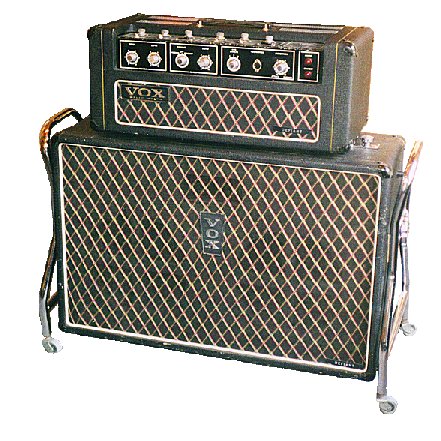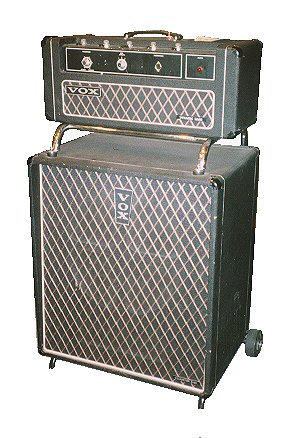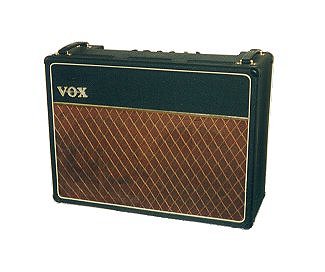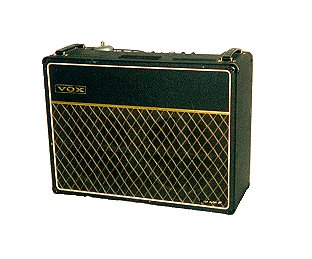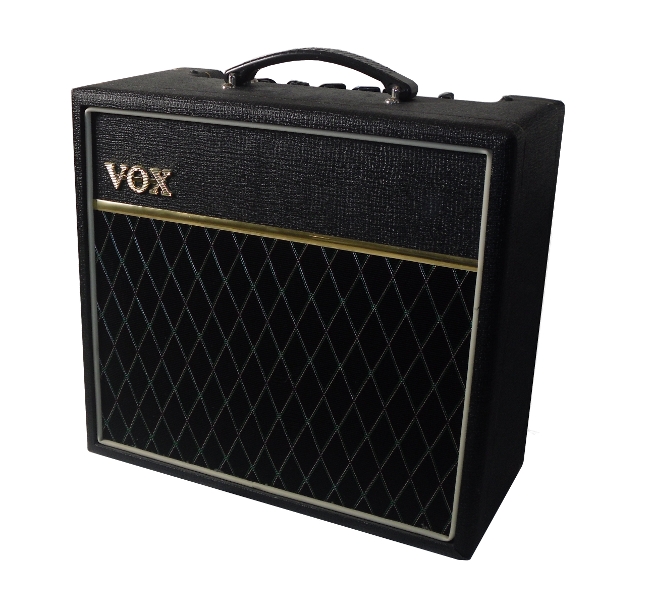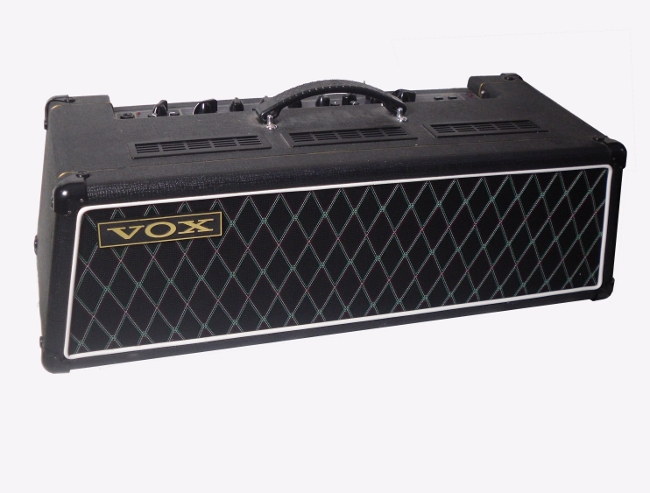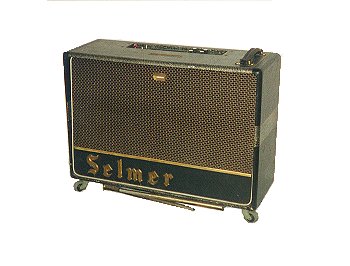The Vox Conqueror
was the end result of the transition from valve amps to transistorized amps.
It was introduced late in 1966 or early 1967. The Beatles used this amp for the Savoy filming of
Hello, Goodbye,
and it can be heard on Magical Mystery Tour, Hey Bulldog and almost certainly also on both
Sgt. Pepper and The White Album.
There is a long standing discussion about whether these amps were Conquerors or Defiants, but they were
Conquerors. This page provides some photographic support for this.
This amplifier sounds much better than the vast majority of older transistor based amps.
One reason might be, that at the time the circuit designers were still thinking in terms
of valve amp design, and built the power section as a class A design. This was after all a
key ingredient in the sound of the classic AC30.
They also used germanium transistors for clipping in the fuzz circuit. In any
case, the overall result is great.
The amp offers a number of unique features, only found on this amp and its brothers and
sisters, the Supreme, Defiant, Virtuoso, Dynamic, Foundation and Super Foundation amps;
namely Mid-Range Boost (MRB) and built in fuzz. It also had reverb and tremolo.
There are three versions of the pre-amp, as the Normal channel was revised in 1968, and the Brilliant channel was
revised in 1969. The 1969 revision changed the way the MRB works.
Mine is equipped with Vox silver alnicos giving it an exceptionally good sound.
More details on The Vox Showroom.
|
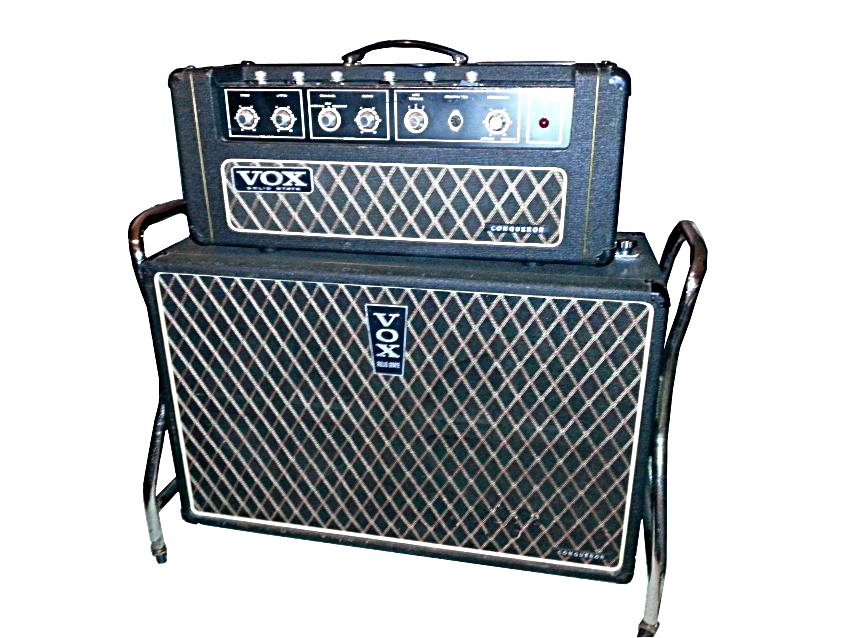 A rig from the VSEL-era. MKIII pre-amp, and one single pilot lamp.
A rig from the VSEL-era. MKIII pre-amp, and one single pilot lamp.
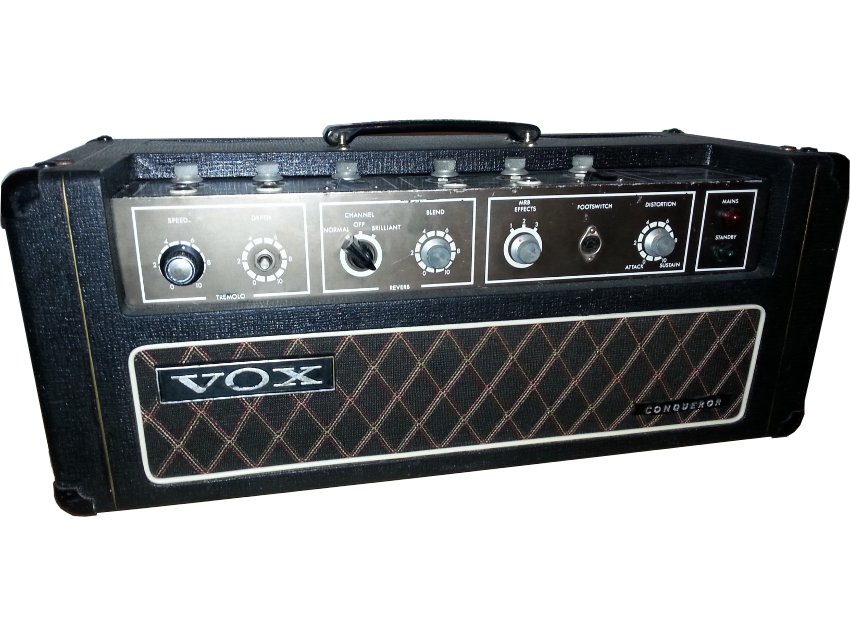 Head serial 1185 from the JMI-era. MKI pre-amp, and two pilot lamps.
Head serial 1185 from the JMI-era. MKI pre-amp, and two pilot lamps.
|

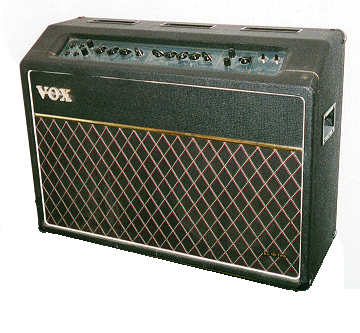
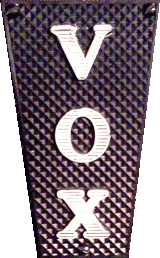
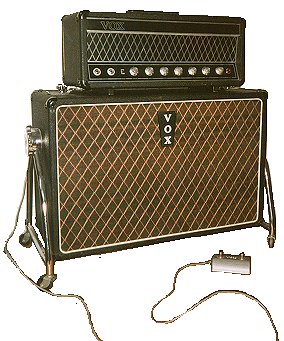

 A rig from the VSEL-era. MKIII pre-amp, and one single pilot lamp.
A rig from the VSEL-era. MKIII pre-amp, and one single pilot lamp.
 Head serial 1185 from the JMI-era. MKI pre-amp, and two pilot lamps.
Head serial 1185 from the JMI-era. MKI pre-amp, and two pilot lamps.
